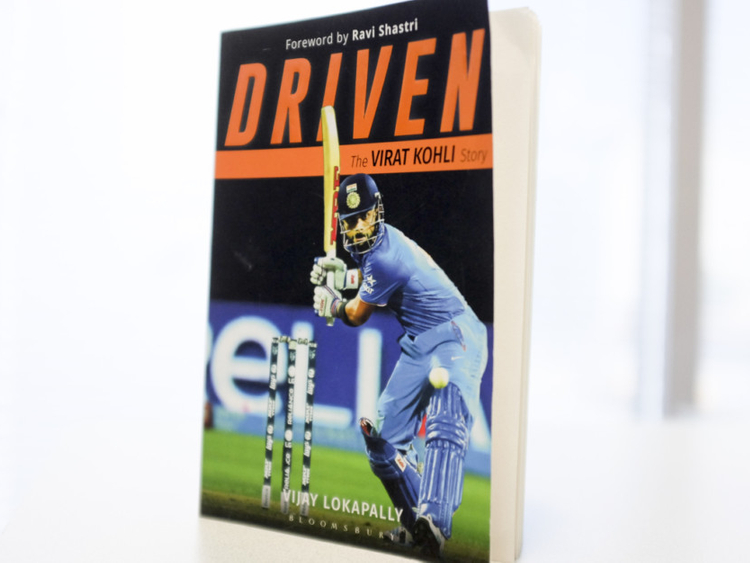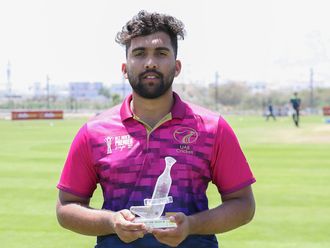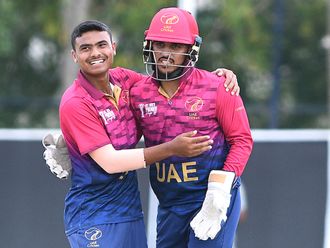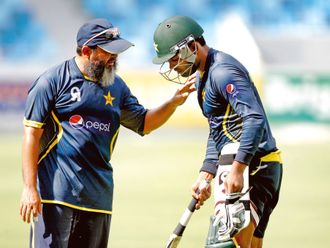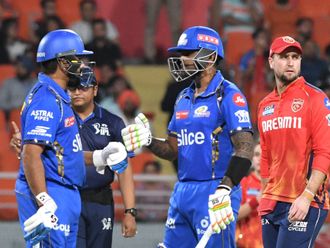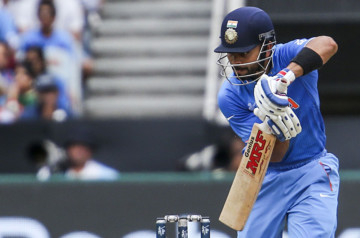
Dubai: There is perhaps no ‘perfect’ thumb rule to launch the biography of a successful sportsperson. While someone like a Sachin Tendulkar consented to publishing his autobiography well after his retirement, Virat Kohli - arguably modern cricket’s biggest star at the moment - has had an early start on this score.
Vijay Lokapally, a senior cricket writer who has reported the game for over three decades and trailed Kohli right from his school days, has ventured to take readers on a trip through the life of Kohli.
Lokapally’s book Driven: The Virat Kohli story is a journey through every phase of Kohli’s career. As a reporter, Lokapally has seen him rise from school’s cricket to captaining Team India and going on to be revered as one of the world’s finest batsman today. Through innumerable anecdotes, he has attempted to present the unknown side of Kohli.
So close is the relationship between Kohli and Lokapally that during the launch of the book which was attended by likes of Anil Kumble, Ravi Shastri, Kapil Dev and Virender Sehwag, Kohli remarked: “No one in the media understand me like Vijay (Lokapally) Sir.”
Recalling the early days, Lokapally said: “I saw him first in an under-15 local match. Had heard about him from his coach (Raj Kumar Sharma) and was happy to watch him (at Pusa ground). I decided to title my book ‘Driven’ because it describes him the best. He is driven to achieve perfection....a cricketer with amazing resolve and passion.”
Motivation
The early days of Kohli as described in the book are a lesson for all aspiring cricketers. It was on May 30, 1998 that Kohli’s father Prem Kohli, a lawyer by profession, took him to the West Delhi Cricket Academy (WDCA) to pursue cricket as a career. That was also the year when Sachin Tendulkar cracked two of his finest centuries at the Sharjah Cricket Stadium during the Coca Cola Cup. Those knocks left an indelible mark in young Kohli’s mind, and also motivated him to take up the game seriously.
It wasn’t Kohli’s batting that first caught the attention of coach Raj Kumar, who subsequently groomed him. It was actually a powerful throw from the boundary in one of the matches. The ball thudded like a bullet into the wicketkeeper’s gloves. Soon in an under-14 match, Kohli stunned his coach with a shot by picking the ball off his leg and sending it soaring over mid-wicket for a six.
“Kohli was ready to bat at any spot and I had to literally push him home after the training sessions. He just wouldn’t leave,” recalls his coach.
The book also talks of how Kohli batted in a Ranji Trophy match even though his father had died due to cerebral attack since he wanted Delhi to gain the first innings lead over Karnataka.
For Kohli, it was a way of paying tribute to his father who had dreamed of him becoming a top cricketer. “I was convinced he would go far when he came to the ground to continue his innings on the day he lost his father. His 52 against the West Indies at Mumbai (in 2011) convinced me that he was to be one of the finest batsmen,” remarked Lokapally.
Kohli has always had a huge respect for senior cricketers and even after becoming famous, he never sprawled on the couch in the dressing room — irrespective of whether seniors were present or not.
The devotion that Kohli had for Tendulkar comes out well in this book through an incident on the day Tendulkar retired from international cricket at the Wankhede Stadium.
Good luck charm
Kohli walked up to Tendulkar and presented him a thread he had worn around his wrist. That was a good luck charm that his father had presented to him and after handing it over, Kohli touched Tendulkar’s feet and hugged him. Lokapally sums up the moment nicely: “The mantle was quietly passed on that day from a master to one in the making.”
Kohli got the nickname Chikoo (sapodilla) when after a hair cut in a fancy salon, Delhi’s assistant coach called him a Chikoo. His willingness to promote other sports like Kabaddi, hockey and football show his sportsmanship qualities. On September 5 when all of India celebrates Teacher’s Day, Kohli once presented his coach with a brand new Skoda Rapid car; this gesture clearly demonstrates the respect he has for a teacher.
One of Kohli’s enviable qualities is that he is never satisfied with his game and loves to dominate the scene. Former Indian opener and Delhi coach Chetan Chauhan believes that Kohli is a man of strong character. “He has an insatiable appetite for runs, higher than Tendulkar. A sign of a great player is when he adjusts his game. Virat has done it. Just as (Sunil Gavaskar) did,” says Chauhan.
The book concludes with the apt lines: “Kohli has indeed come a long way from the day he reported at Raj Kumar Sharma’s academy to learn cricket. Today, the world is taking lessons from him.”
‘Driven: The Virat Kohli story’ is published by Bloomsbury and will soon be available in the UAE.


